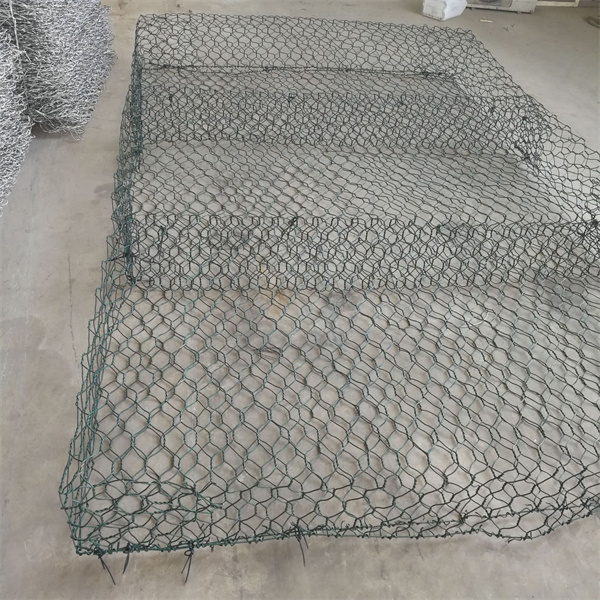Nov . 28, 2024 07:33 Back to list
Selecting the Right Stone Size for Effective Gabion Wall Construction
Understanding Gabion Stone Size A Comprehensive Guide
Gabions are versatile structures made from wire mesh containers filled with various types of materials, usually stones. They have become increasingly popular in civil engineering, landscaping, and environmental protection due to their ability to provide effective drainage, erosion control, and aesthetic enhancements. One of the most crucial factors in the design and functionality of gabions is the size of the stones used to fill them. Understanding gabion stone size is essential for achieving the desired structural integrity and functionality.
The Importance of Stone Size
The size of stones in gabions plays a critical role in determining the strength, stability, and overall effectiveness of the structure. Properly sized stones ensure that the gabion can withstand external pressures, such as water flow, soil movement, and other environmental factors. Additionally, the size of the stones can affect the permeability of the gabion, influencing how well it drains water.
Gabion stone sizes typically range from small gravel to large boulders, and each size serves different purposes. Smaller stones, for instance, can be used to fill gaps and provide a dense packing, while larger stones offer more significant mass and stability. The choice of stone size will depend on the specific application and the environmental conditions the gabion will face.
Standard Gabion Stone Sizes
Gabions are generally filled with stones that conform to specific size ranges
. Commonly used sizes include1. Gravel (20-50 mm) These smaller stones are often used for decorative gabions or in situations where drainage is paramount. Gravel allows for excellent water flow, preventing water buildup and reducing hydrostatic pressure.
2. Rip Rap (50-150 mm) This size is commonly used for erosion control and bank stabilization. Rip rap provides a balance between strength and aesthetics, making it ideal for shorelines and slopes.
3. Boulders (150-300 mm and larger) Larger boulders provide significant mass and are perfect for applications requiring high stability, such as retaining walls or dams. However, they also require more careful placement to avoid shifting.
gabion stone size

Each project may have different requirements, so it is essential to consider local regulations and environmental standards when selecting the type and size of stone for gabions.
Factors Influencing Stone Size Selection
When choosing the appropriate stone size for a gabion project, several factors must be considered
1. Purpose of the Gabion Depending on whether the gabion is intended for erosion control, drainage, or decorative purposes, the stone size will vary. For example, decorative gabions may utilize smaller, more uniform stones, while functional gabions may require larger stones for stability.
2. Environmental Conditions The project's location can significantly impact the choice of stone size. Areas prone to heavy rains or flooding may require larger stones to withstand the increased pressure from water flow.
3. Mesh Size of the Gabion The wire mesh used in gabion construction has openings that determine the maximum permissible size of the stones. It is crucial to choose stones that will not pass through the mesh openings, ensuring that they remain contained within the structure.
4. Aesthetics While functionality is paramount, the visual appeal of gabions cannot be overlooked. Depending on the design goals, selecting a mix of stone sizes or opting for uniform stones can enhance the overall appearance of the project.
Conclusion
Gabion stone size is a critical aspect of gabion design that influences both the performance and aesthetics of the structure. By carefully selecting the appropriate stone size based on the project's purpose, environmental conditions, and aesthetic goals, builders can create effective and visually pleasing gabion systems. The versatility and strength of gabions make them a valuable solution in various applications, from erosion control to landscape enhancement. As this construction method continues to gain popularity, understanding the fundamentals of gabion stone size will be essential for achieving lasting success in any project.
-
The Role of Galvanized Gabion Mesh in Riverbank Protection
NewsJun.26,2025
-
The Role of Gabion Basket Raised Bed in Sustainable Gardening
NewsJun.26,2025
-
Quality Assurance of Wire Mesh Gabion Baskets
NewsJun.26,2025
-
Installation Guide for Welded Gabion Box
NewsJun.26,2025
-
How to Choose the Right Gabion Box
NewsJun.26,2025
-
Different Types of Gabion Wire Mesh
NewsJun.26,2025
-
Why PVC Coated Gabion Mattress Is the Best Solution for Long-Term Erosion Control
NewsMay.23,2025






